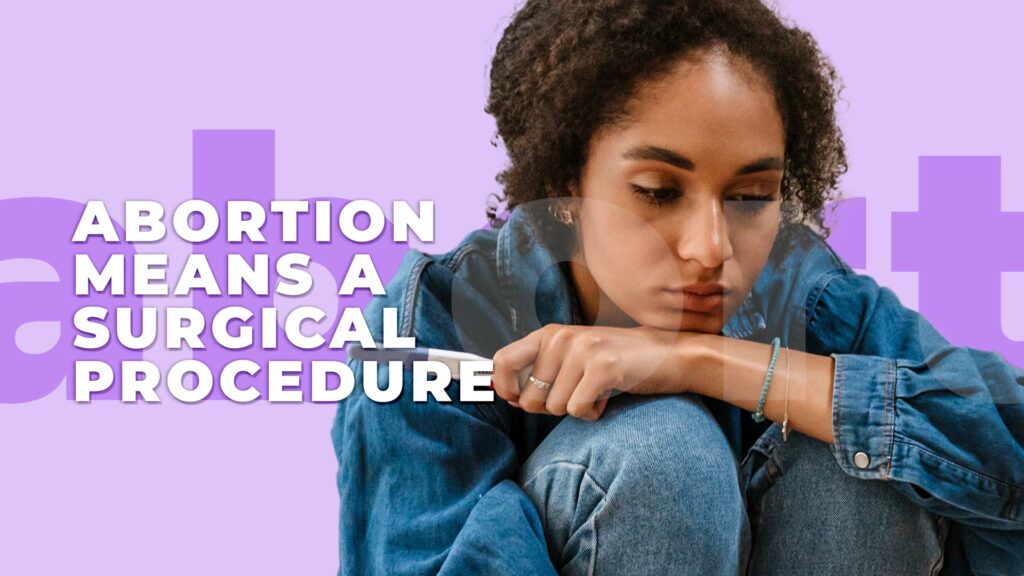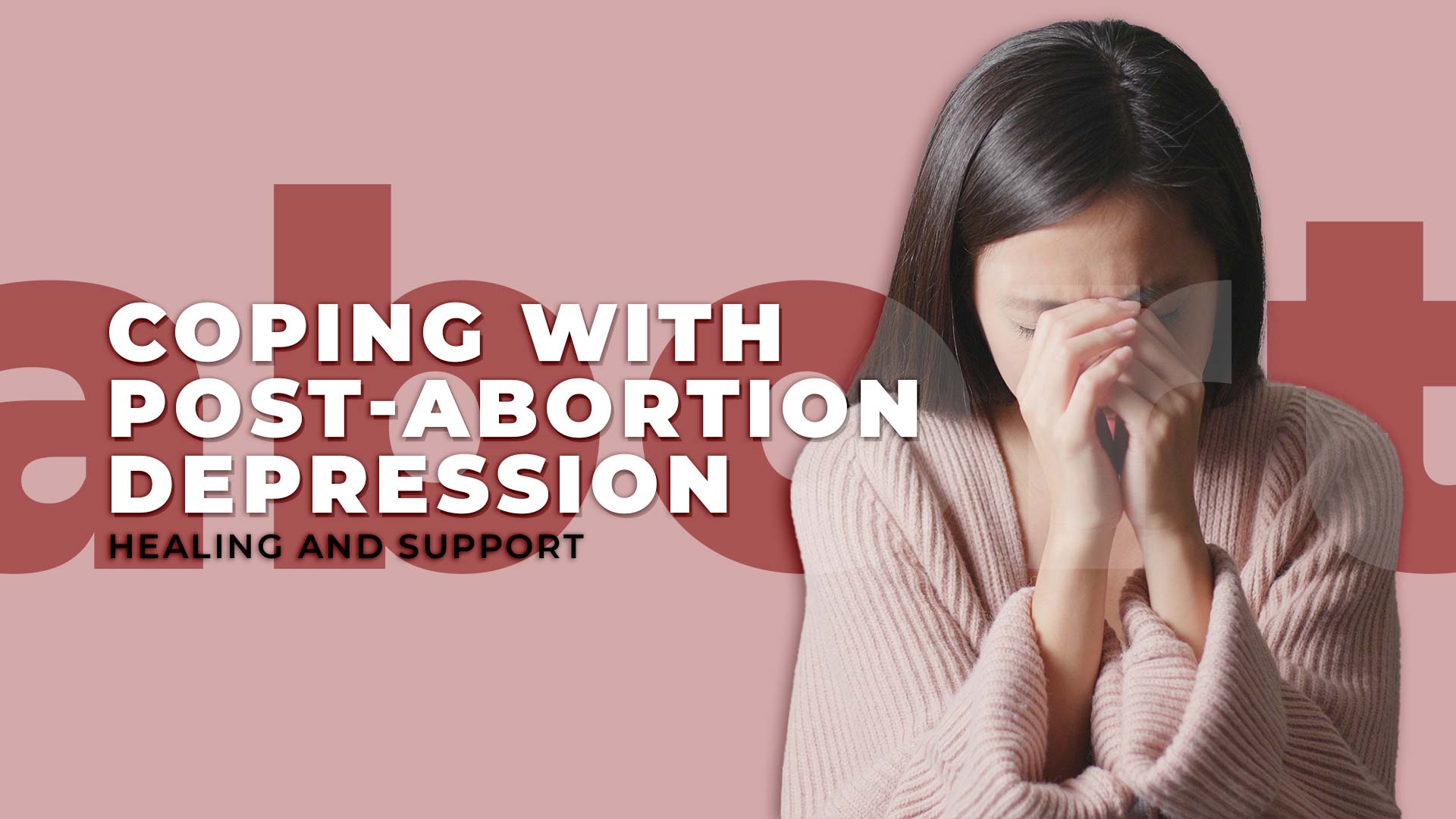If you consume news, television, movies, or any form of media, chances are you’ve come across misleading information about abortion. Various groups opposed to abortion propagate a range of horror stories, from linking it to breast cancer to exaggerating fetal pain. It can be a challenging environment for anyone contemplating abortion. However, it’s important to recognize that most of these narratives are simply fictional accounts, myths, or urban legends.
Therefore, when navigating the vast expanse of the Internet, it’s crucial to rely on trustworthy information. Our objective is to transform the abortion discourse and foster meaningful conversations. We are here to provide accurate information and dispel misconceptions. Below we will delve into the myths surrounding abortion, and why you shouldn’t believe them.
13 Abortion Myths You Should Be Aware Of
Myth #1: Abortion is the act of killing a baby.
Fact: This particular myth sparks considerable controversy and is commonly used as an argument in political, religious, and moral debates. However, let’s examine the scientific facts:
During the first trimester of pregnancy, there is an embryo that later develops into a fetus after the second month of gestation. In these early stages, the fetus is not an independent entity. Simply put, in the first and second trimesters, when most abortions occur, the fetus is not viable. Viability refers to the ability to survive outside the womb without assistance.
Myth #2: Abortion is a dangerous procedure.
Fact: Here’s the truth: Abortion is NOT dangerous! In fact, when it comes to medical procedures, particularly first trimester abortions, it is one of the safest. According to the Guttmacher Institute, the risk of experiencing a major complication requiring a hospital visit from a first trimester abortion is less than 0.05%.
Here’s something that may surprise you even more: Abortion is significantly safer than childbirth. Yes, you read that right. Research has shown that pregnant individuals are 14 times more likely to face mortality due to complications during childbirth compared to complications arising from an abortion.
Myth #3: Abortion means a surgical procedure.

Fact: Over 50% of abortions nowadays are medical abortions, eliminating the need for surgery. These medical abortions can be carried out until the 11th week of pregnancy. FDA-approved medications such as mifepristone and misoprostol are utilized, which inhibit the hormones required for a pregnancy to continue. As the uterus empties, these medications can cause cramping and bleeding. The MTP kit contains drugs mifepristone and misoprostol that block the hormones necessary for pregnancy to continue, leading to cramping and bleeding as the uterus empties.
Myth #4: Abortion causes breast cancer.
Fact: This myth holds a prominent position because it appears to be grounded in scientific reasoning. However, in 1997, the New England Journal of Medicine conducted a study with 1.5 million participants to examine this claim. The study concluded that there is no independent correlation between abortion and breast cancer.
Subsequently, the American Medical Association and the American Cancer Society have both issued statements affirming that there is no connection between abortion and breast cancer. It is worth noting that carrying a pregnancy to full term may actually reduce the risk of breast cancer.
Myth #5: First-trimester fetuses can feel pain.
Fact: The perception of pain occurs in the neocortex, which is not fully developed until the third trimester. By that point, most miscarriages have already occurred, ectopic pregnancies have been addressed, and approximately 99% of abortions have taken place. Hence, the claim that first-trimester fetuses can experience pain is not supported by scientific evidence.
Myth #6: Abortion leads to psychological distress.
Fact: There is no evidence to support the claim that abortion has long-term negative effects on mental health, and the majority of women do not regret their decision.
A significant study involving 1,000 women who sought abortions, including those who could access legal procedures and those who were denied, revealed that women who were denied abortions experienced worse mental and physical health outcomes, along with diminished life aspirations. Conversely, among those who received the abortion, 95% reported that it was the best decision for them, even after five years had passed since the procedure.
On the other hand, continuing with an unwanted pregnancy can cause distress. It is important to acknowledge that carrying an unwanted pregnancy not only impacts the pregnant individual’s life but also affects the overall well-being of their family members. It can result in a lower quality of life, financial instability, and a decline in mental health.
Myth #7: Abortion will impact your future fertility.

Fact: Medical abortions have been found to have no adverse effects on future fertility. Infertility resulting from surgical abortions is extremely rare and often treatable. Moreover, there is no evidence to suggest that abortions increase the risk of miscarriage, ectopic pregnancy, low birth weight, or preterm birth.
Myth #8: Emergency contraception (Plan B) is abortion.
Fact: Plan B and other emergency contraceptives function by suppressing ovulation and preventing the fertilization of an egg. If ovulation has already occurred, taking emergency contraceptives will not prevent pregnancy. Similarly, if fertilization has already taken place, emergency contraceptives will not terminate the pregnancy.
Myth #9: There are too many abortions.
Fact: The decision to have an abortion is deeply personal and unique to each individual. However, let’s focus on the facts. Firstly, at least half of all pregnancies in the United States are unintended, indicating a significant number of unplanned and potentially unwanted pregnancies in the country.
The U.S. has a higher rate of unintended pregnancies compared to many other developed nations, and approximately 40% of these unintended pregnancies result in an abortion. It’s worth noting that the overall abortion rate has decreased over the past decade, with 1.06 million abortions performed in 2011.
Myth #10: Abortion involves suctioning out one’s insides.
Fact: This myth often relies on dramatic and exaggerated imagery as a scare tactic. In a manual vacuum aspiration abortion, which is just one option among several, only the uterus is emptied during the procedure, leaving all other internal organs untouched. This globally used procedure is safe, quick, effective, and is often associated with minimal pain for many individuals. Another option is medication abortion, which involves taking a series of pills to induce an abortion.
Myth #11: People who have abortions inevitably experience regret or intense grief.
Fact: The emotional experience of having an abortion varies from person to person. It can be an emotional decision for some while being approached in a matter-of-fact manner by others. It is normal to feel grief or sadness following an abortion, but note that 95% of abortion patients reported feeling that they made the right decision.
Myth #12: Only selfish individuals have abortions.
Fact: The decision not to continue a pregnancy involves numerous factors and is deeply personal. We believe in each person’s ability to determine their own best path based on their unique circumstances. This decision is not rooted in selfishness but rather reflects maturity, courage, and the determination to follow one’s own path despite these prevalent myths.
It is essential to challenge this myth, as it often stems from sexist beliefs suggesting that individuals should prioritize children and family above all else. Your life, body, goals, and dreams are important, and you have the agency to decide when you are ready to have children.
Myth #13: Medical abortion is highly painful.
Fact: It is common to experience bleeding and pelvic cramping during a medical abortion. These cramps may become intense, especially within the first 24 hours after taking misoprostol tablets. Pain relief medication is typically recommended and provided.
Women often share that being well-informed about what to anticipate, having made an informed decision about the chosen method, and understanding the changes occurring in their bodies throughout the different stages of the process better equip them to manage the process of medical abortion. With adequate preparation and knowledge, women are better able to handle the experience of a medical abortion.
Why we should distinguish between abortion facts and abortion fiction?

According to Planned Parenthood, approximately 1 in 4 women in the United States will have an abortion by the time they reach the age of 45. This means that you probably know several people who have considered or chosen to terminate a pregnancy.
Opponents of abortion have been spreading myths for years, falsely claiming that abortions are dangerous, impact fertility, or harm mental and physical health. These falsehoods aim to frighten women and undermine their access to this essential healthcare service.
It is crucial for everyone to be aware of the facts so that they can make informed decisions. Ultimately, getting an abortion does not make a person bad, regardless of the reasons behind their choice. Abortion is a fundamental aspect of healthcare, just like any other routine preventive procedure.
Anti-abortion laws, much like anti-contraception laws, are often framed as protecting women and their health, sometimes even claiming to protect women from their own decisions. However, these arguments are entirely false and deeply disingenuous. They reveal the profound sexism and racism at the core of attempting to control people’s bodies.
References
- Induced Abortion in the United States.https://www.guttmacher.org/fact-sheet/induced-abortion-united-states
- Frank, P., Mcnamee, R., Hannaford, P.C., Kay, C.R. and Hirsch, S. (1993), The effect of induced abortion on subsequent fertility. BJOG: An International Journal of Obstetrics & Gynaecology, 100: 575-580. https://doi.org/10.1111/j.1471-0528.1993.tb15313.x
- Raymond, Elizabeth G. MD, MPH; Grimes, David A. MD. The Comparative Safety of Legal Induced Abortion and Childbirth in the United States. Obstetrics & Gynecology 119(2 Part 1):p 215-219, February 2012. | DOI: 10.1097/AOG.0b013e31823fe923
- Melbye M, Wohlfahrt J, Olsen JH, Frisch M, Westergaard T, Helweg-Larsen K, Andersen PK. Induced abortion and the risk of breast cancer. N Engl J Med. 1997 Jan 9;336(2):81-5. DOI: 10.1056/NEJM199701093360201
- Rocca CH, Samari G, Foster DG, Gould H, Kimport K. Emotions and decision rightness over five years following an abortion: An examination of decision difficulty and abortion stigma. Soc Sci Med. 2020 Mar;248:112704. DOI: 10.1016/j.socscimed.2019.112704
Reported contraceptive use in the month of becoming pregnant among U.S. abortion patients in 2000 and 2014. Jones, Rachel K. DOI:https://doi.org/10.1016/j.contraception.2017.12.018





